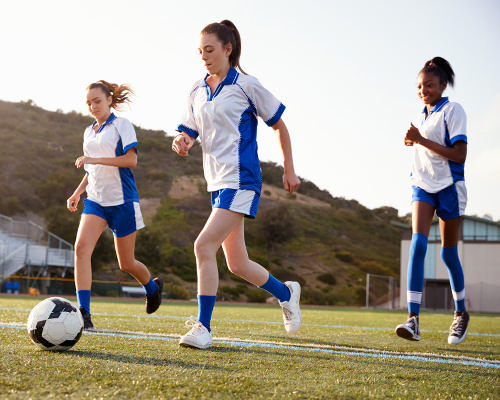03 Mar 2023
Physically active teenage girls do better academically, according to new research
BY Frances Marcellin

A study from the University of Illinois has found that when teenage girls (age 15-18) take part in more moderate and vigorous physical activity each day they have better attentional control – which can, in turn, positively impact academic outcomes. Those engaging in less physical activity were slower and less accurate than their peers in terms of attentional control.
Data shows that more than 80 per cent of adolescents aged 11-17 do not meet current physical activity guidelines. The study’s co-authors say that there is growing evidence to suggest that low levels of physical activity can “adversely impact cognitive and brain health in youth”, so the aim was to examine the associations between accelerometer-measured physical activity intensity, physical activity volume, attentional control and working memory in participants aged 15-18 years old.
Dominika Pindus, the kinesiology and community health professor at the university, led the study – which was supported by the National Health and Medical Research Council of Australia – and the findings were published in the Scandinavian Journal of Medicine & Science in Sports.
“Attentional control is an aspect of inhibitory control – we can think of inhibitory control as our ability to control attention when distracted, and our ability to control acting on an impulse,” said Pindus. “Studies have found that inhibitory control is related to better academic achievement.”
Pindus used baseline data from a trial of high school students in Australia. Overall, 418 students participated in the study to provide accelerometer and cognitive data, of which 211 were female. They wore GT9X Link accelerometers on a non-dominant wrist for seven days, which recorded changes in acceleration. “What we get is a continuous signal of the intensity of movement,” said Pindus.
The participants also engaged in computerised cognitive tasks that recorded response times across various trials. “This measure helps us understand the efficiency of higher attentional control,” she said.
Physical activity over time was measured using an 'intensity gradient', which corresponded with the girls’ ability to maintain their attention on a task in the face of distracting information during cognitive trials.
Those recording less intense physical activity over the course of the day spent longer on the cognitive tests and were less accurate.
“It tells us that we may need to focus on intervention strategies that engage girls who are the least physically active in high-intensity physical activity to enhance cognitive functions important for academic achievement,” said Pindus.
Close Window